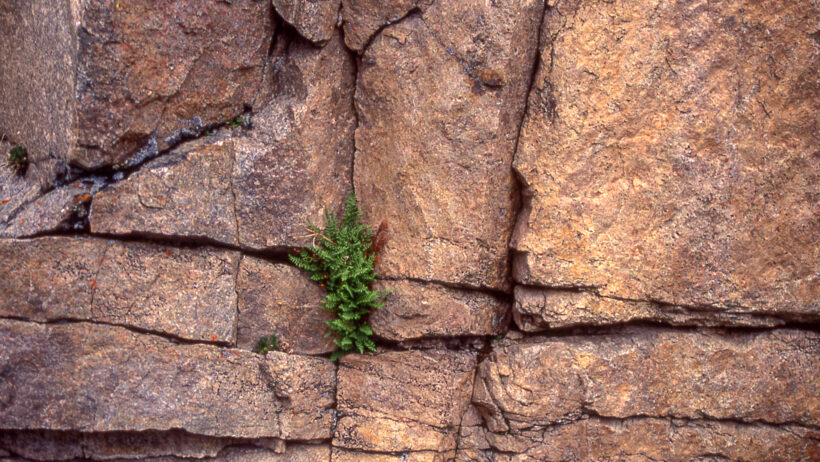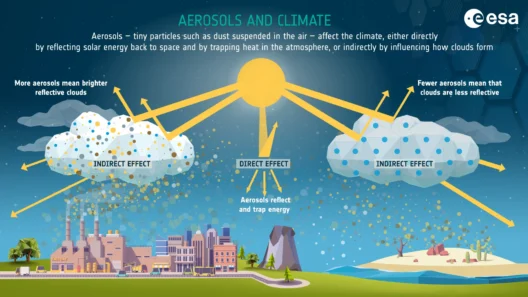Weathering and erosion are natural processes that shape the very landscape we inhabit. While these processes have existed long before humans walked the earth, the accelerating tempo of climate change is unveiling a new facet of their interaction with the environment. Understanding the multifaceted relationship between weathering and erosion due to climatic influences is crucial for conserving our planet’s ecosystems. This article delves into the intricate mechanisms of weathering and erosion, examines their interdependence, and elucidates the implications of climate variability on these processes.
The fundamental distinction between weathering and erosion must be clarified at the outset. Weathering is the process through which rocks and minerals are broken down into smaller particles due to environmental factors, including temperature changes, moisture, and biological activity. It occurs in two primary forms: mechanical weathering and chemical weathering. Mechanical weathering physically breaks down rocks without altering their chemical composition, facilitated by factors such as freeze-thaw cycles, thermal expansion, and biological activity from plant roots. Conversely, chemical weathering involves chemical reactions that alter the minerals within rocks, such as oxidation, hydrolysis, and carbonation, profoundly affecting their structural integrity.
When we think of erosion, we envision the movement of soil and rock particles from one location to another, primarily driven by agents such as water, wind, and ice. Erosion removes material from the earth, often leading to significant environmental impacts, including habitat destruction and reduced soil fertility. The synergy between weathering and erosion is evident; while weathering sets the stage by breaking materials down, erosion acts as the vehicle transferring these materials away. This relationship forms a delicate balance, crucial for maintaining ecosystem integrity.
Recent studies indicate that climate change is exacerbating both weathering and erosion processes. Rising global temperatures contribute to increased rates of mechanical weathering. For example, extreme temperature fluctuations can cause rock expansion and contraction, leading to the physical disintegration of materials. Furthermore, intensifying weather patterns result in heavier rainfall events. These torrential rains accelerate erosion by saturating soils, increasing runoff, and enhancing soil displacement. The implications are particularly pronounced in regions already vulnerable to erosion.
The role of vegetation cannot be overstated in the context of erosion and weathering. Plants and trees stabilize soil through their root systems. As climate change threatens plant diversity and health—whether through increased drought or flooding—erosion rates are likely to escalate. When vegetation diminishes, the soil’s protective shield is compromised, allowing for unencumbered erosion. This vegetation-sediment relationship is critical for maintaining ecosystem balance, and as climatic conditions shift, the repercussions may resonate deeply throughout food webs.
A pertinent example can be observed in coastal areas, where rising sea levels and intensified storm surges decimate shorelines. The erosion of coastal rock formations and sediments leads not only to loss of land but also to significant habitat degradation for marine and terrestrial species alike. This coastal erosion is further exacerbated by the weakening of terrestrial ecosystems typically tasked with protecting shorelines from weather-induced erosion. The feedback loop is troubling, as loss of habitat diminishes biodiversity, which in turn affects resilience to future climatic changes.
Soil erosion is another pressing concern tied closely to climate variability. Agricultural practices often contribute to soil degradation, particularly when combined with climatic stressors. The increasing unpredictability of rainfall patterns leads to both droughts and deluges, intensifying the challenges farmers face in maintaining soil health. An exposed topsoil layer is vulnerable to wind and water erosion, leading to further loss of soil fertility and increased reliance on chemical fertilizers. This synergistic cycle creates a predicament that requires innovative sustainable practices to mitigate soil erosion while adapting to the changing climate.
The scientific community has turned its focus toward understanding these processes better to develop strategies for mitigation. Engineers, environmental scientists, and policymakers are increasingly collaborating to create erosion control measures tailored to specific climates and ecosystems. These may include terraces on slopes to slow water flow, the planting of cover crops during off-seasons to maintain soil structure, and the implementation of sustainable land-use practices. Moreover, reforestation and afforestation efforts have gained attention as strategies to combat erosion while simultaneously enhancing biodiversity and carbon sequestration.
Education and public awareness campaigns are vital components of any successful strategy to address weathering and erosion challenges posed by climate change. Communities can foster resilience by understanding the importance of soil health, the value of native vegetation, and integrating sustainable practices into their daily lives. Grassroots efforts to combat erosion may lead not only to enhanced soil quality and productive landscapes but also to a collective commitment to environmental stewardship.
Finally, as we navigate an increasingly uncertain climatic future, it is imperative to recognize that weathering and erosion are not mere geological phenomena. They are central to our existence, shaping the environment we live in and influencing our agricultural systems, water resources, and overall ecosystem health. The interdependent nature of weathering, erosion, and climate change necessitates an integrated approach that embraces both scientific inquiry and community engagement. Our survival—and the legacy we leave for future generations—hinges on our ability to mitigate these processes’ detrimental impacts while fostering a more harmonious relationship with nature.




